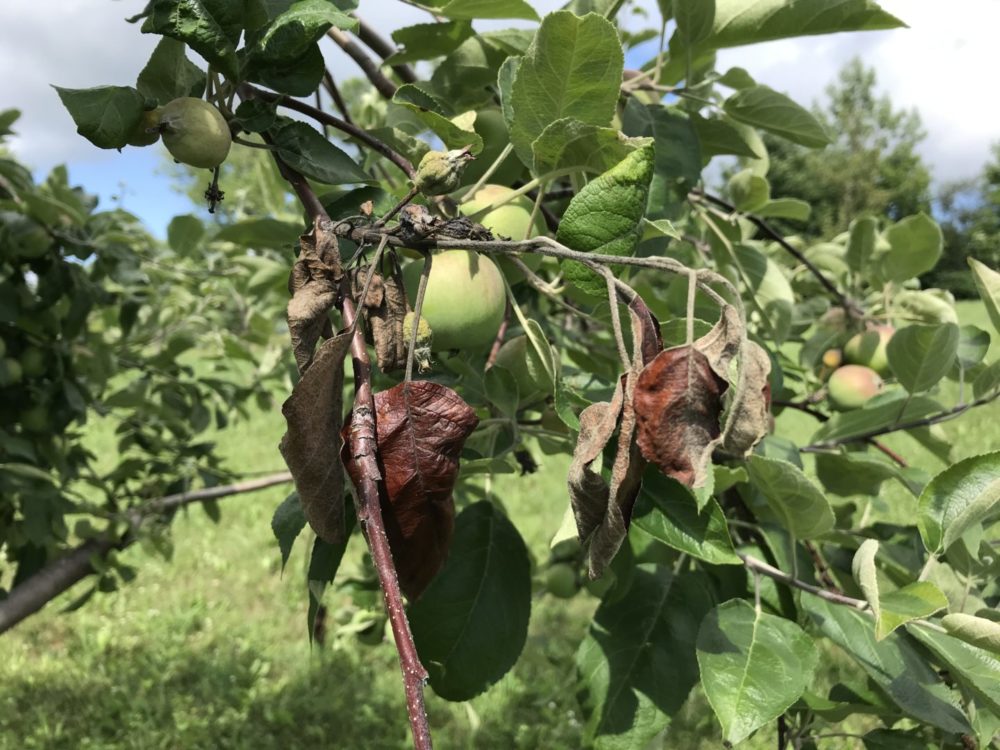What is Fire Blight?
Fire blight is one of the most destructive diseases affecting apple and pear trees. It is caused by the bacterium Erwinia amylovora and can flare up and cause significant damage to commercial orchards and back yard fruit trees without notice. The bacterium can be assumed to always have a presence on fruit trees with the potential to cause significant infection when environmental conditions are favorable. The fire blight bacterium overwinters in cankers on twigs, branches and trunks of host trees, while new infections primarily occur through blossoms. Infected shoots, also known as strikes, die back, turn black and curl at the tip. The dieback looks fire-scorched, thus its name.
2020 Spring Weather
Unfortunately, the spring of 2020 provided near perfect conditions for the spread of this disease. When the average temperature during bloom is over 60°F and the weather is rainy or humid with heavy dew, fire blight infection will occur. The ideal conditions for the outbreak were further exacerbated because of an abundance of rat tail blooms (extended late bloom) which are highly susceptible to infection. We have received reports from Vermont and New Hampshire state agricultural specialists that even commercial orchards that monitor and treat meticulously for this disease are seeing significant infections.
Treatments
Within the commercial orchard industry, the best treatment program requires meticulous monitoring and multiple sprays using an antibiotic called streptomycin. However, due to the risk of overuse and creating disease resistance, it is not recommended or responsible to use streptomycin for backyard fruit trees and noncommercial orchards. Instead, we prefer to use proper pruning methods, low nitrogen organic fertilizer and spring treatments with copper-based products to minimize reinfection and prevent long-term damage. We also do not spray during bloom because of the risk to pollinators and beneficial insects.
Pruning and Spray Applications
While the risk of further fire blight infection is low at this point in the season, there are solutions to help reduce the risk of significant repeat infections next year. We suggest performing a summer pruning technique called “ugly stub pruning”. All strikes are pruned at 12-18 inches past the infection leaving a stub of wood remaining to act as a buffer between the infection and larger branches in case another severe weather event initiates a late-season infection. The stubs should then be removed during the winter. The pruning must be done during a dry day with at least a couple dry days to follow. All trimmings should be carefully removed from the orchard to minimize spreading the disease. Sanitize your pruning tools between cuts and minimize contact of trimmings with other parts of the tree.
The following season, we recommend early spray treatments using a copper fungicide until terminal bud set, to further reduce the amount of bacteria on the stems and branches. The rest is up to Mother Nature as we hope next spring is not too early, not too wet and not too warm.


